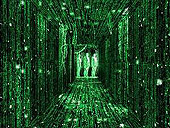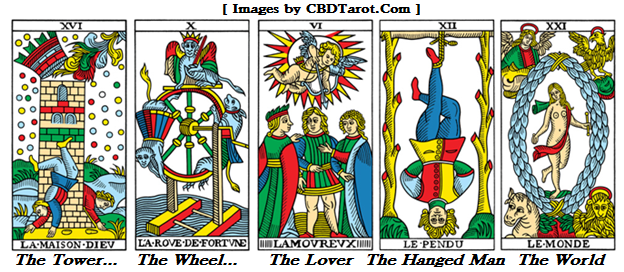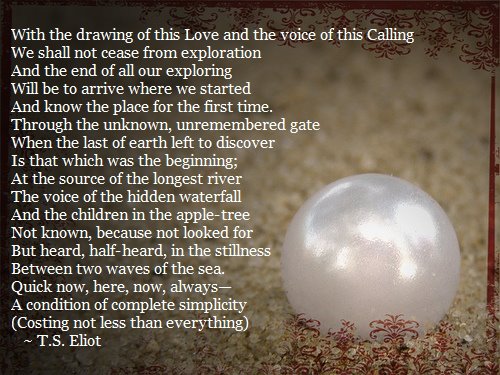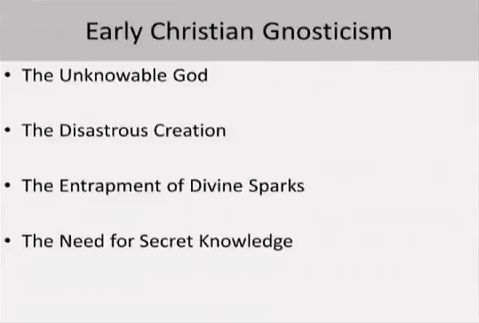“This does not mean that at one time [the active intellect] thinks but at another time it does not think, but when separated [from the body] it is just exactly what it is, and this alone is deathless and everlasting (though we have no memory, because this sort of intellect is not acted upon, while the sort that is acted upon is destructible), and without this nothing thinks…” [paraphrased]
(Aristotle’s “On the Soul”, Book III, Chapter 5).
Below is an extended excerpt from the Wikipedia article on the active intellect in Aristotle which I have had occasion to refer to, of late, in various philosophical conversations. Earlier, I posted excerpts on Facebook from both A.E. Taylor and John Herman Randall on this topic. Readers may want to check out those links, before proceeding– and/or scroll down to read the excerpt from the aforementioned Wikipedia article –but, in any event, what immediately follows are my own (possibly unique) claims with reference to this admittedly obscure concept:
- On the one hand, it does not seem likely that our “personality” (i.e. our conventional, egoic identity which is thoroughly entangled with multifarious physical, family, professional, and political relationships) survives the death of our body. Rather, the “I”, in this sense, appears to be a social construct that arises after the birth of the human body and seems to be very much dependent on the body as a kind of biological substrate–and on complex systems of social conditioning and reinforcement.
- On the other hand, this “I” to which we are so attached— this socially conditioned sense of self —often appears to be dead and gone prior to this body being declared legally dead!
As I see it, both of these appearances are consistent with the more general understanding in Aristotle that the various types of “soul” (e.g. nutritive, animal, rational) are a function of the various kinds of bodies that there are (for example: plants, animals, and humans, respectively–with the healthy human body being capable of functioning on all three levels simultaneously). Thus, many if not all aspects of the rational human soul do seem to develop after the initial birth of the human body and might, indeed, be destroyed prior to the destruction of our animal or nutritive soul.
Now whether or not all this is ultimately the case, it certainly seems plausible, does it not? Perhaps even probable… Thus– even in the scriptures –it is written:
Ecclesiastes 3:18 I said in my heart with regard to human beings that God is testing them to show that they are but animals.19 For the fate of humans and the fate of animals is the same; as one dies, so dies the other. They all have the same breath, and humans have no advantage over the animals; for all is vanity.20 All go to one place; all are from the dust, and all turn to dust again. 21 Who knows whether the human spirit goes upward and the spirit of animals goes downward to the earth? 22 So I saw that there is nothing better than that all should enjoy their work, for that is their lot; who can bring them to see what will be after them?
Psalm 146:3 Do not put your trust in princes, in mortals, in whom there is no help. 4 When their breath departs, they return to the earth; on that very day their plans [thoughts] perish.
- However, consciousness as such— the cutting edge of qualitative awareness —does NOT appear to be the product of material processes. That is, we cannot show why sentient experience, as such, should ever result from certain combinations of insentient matter; and since, in addition (if consciousness were reducible to physical processes), it would not (qua consciousness) add anything to the ability of a physical organism to respond to its physical environment in the first place, it would never, as such, be “selected for” in any biological sense (see Two Arguments Against Physicalism).
- Furthermore, the deeper we look into “matter”, the less “material” it seems (and the more relevant the conscious observer appears to be to the actual form which material processes assume once the various “probability waves” finally collapse under the watchful eye of the observing subject — witness Schrodinger’s cat). Thus:
“Whatever matter is, it is not made of matter.”
~ Prof. Hans-Peter Dürr
(often quoted by Peter Russell)
- Moreover, while we can easily see that we could have no experience of “matter” whatsoever apart from consciousness, we often perceive extended substances that we feel certain have no real existence apart from us (at least not according to our better judgment, after the fact–e.g. in dreams, hallucinations, and optical illusions).
- As such, I conclude that a certain primacy or priority must be given to “consciousness” or “mind”, as such — that is, to “BIG MIND” — in contrast to the various analytic operations of our “small minds”, along with their tendency to maintain a running mental commentary on all that transpires). While the latter operations (of our “small minds”) may, indeed, be correlated with neurophysiological states, consciousness as such (“BIG MIND”) would seem to be, in principle, irreducible to physical processes.
 Thus, in contrast to the many conundrums that physicalism gives rise to (more about which, below), it seems very intuitive to me to think that our “small minds” (our psyches) shine in the borrowed light of BIG MIND (Spirit, nous, or pneuma) analogous to the way in which the moon shines in the light of the SUN and that, ultimately, this Spiritual light is One though the lamps be many…
Thus, in contrast to the many conundrums that physicalism gives rise to (more about which, below), it seems very intuitive to me to think that our “small minds” (our psyches) shine in the borrowed light of BIG MIND (Spirit, nous, or pneuma) analogous to the way in which the moon shines in the light of the SUN and that, ultimately, this Spiritual light is One though the lamps be many…

And rightly or wrongly, I am inclined to associate this One light with Aristotle’s active intellect…
- Thus, I say— consistent with the general form (at least) of Aristotle’s claim —that there is an aspect of our mind that is prior to and transcends the life of these apparent bodies.
Moreover, I further claim that:
- The hard-problem of consciousness offers the first clue to this…
- It is further confirmed by the undeniable incoherence of any reductive description of perception and cognition (as being merely the product of electro-chemical processes in our brains–see A Spiritual Exercise).
- As such, while we can find correspondences between neurophysiological states and states of mind, to be sure– and we may rightly believe that those states of mind cannot survive the death of the body —we cannot coherently account for consciousness as such by appealing to physical processes (see short YouTube video of David Chalmers discussing this problem with Robert Lawrence Kuhn).
This is my considered opinion and I think it is roughly consistent with Aristotle’s idea that while the passive intellect does not survive the death of our body, there is a part of the mind that “alone is deathless and everlasting . . . and without this nothing thinks” (see extended quote in the Wikipedia article, below).
Now, as I see it, all of the above offers a theoretical basis that accounts for the possibility of a kind of gnosis (or Spiritual realization) which is, in a sense, accessible to all— which (underlined expression), it may be worth noting, sounds (phonetically) a lot like innocence accessible to all (note also the children playing in the light of The Sun in the image, above, but I digress) — and so it is written:
“Whosoever will may come and drink of
the water of life freely” (Revelation 22:17).
Moreover, as I see it, one portal to this kind of gnosis or Spiritual realization is captured in the following proposition:
To recognize and honor the light of awareness is to know eternal life.

What IS Awareness? This is the stone that the builder rejected… This is the alpha and omega, the first and the last, the beginning and the end…
Thus it is written:
John 1: 10 He was in the world, and the world was made through Him, and the world did not know Him. 11 He came to His own, and those who were His own did not receive Him. 12 But as many as received Him, to them He gave the right [power] to become children of God…
Please pardon the sudden proliferation of Christian scriptures—I do realize that we are not all Christians (either by birth or by choice). But to be fair, the same thing can be found throughout the Hindu scriptures.
Consider, for example, the following text from the Upanishads which I enjoy sharing from time to time–this is probably more of a paraphrase (or even an interpretation) than a translation, but it communicates the point with crystal clarity:
“Like two birds of golden plumage, inseparable companions, the individual self and the immortal Self are perched on the branches of the selfsame tree. The former tastes of the sweet and bitter fruits of the tree; the latter, tasting of neither, calmly observes. The individual self, deluded by forgetfulness of his identity with the divine Self, bewildered by his ego, grieves and is sad. But when he recognizes the worshipful Lord as his own true Self, and beholds his glory, he grieves no more” (Mundaka Upanishad 3:1:1-2).
And a similar idea is found– at least in nascent form –in the Jewish scriptures:
“How precious is your steadfast love, O God! All people may take refuge in the shadow of your wings. They feast on the abundance of your house, and you give them drink from the river of your delights. For with you is the fountain of life; in your light we see light. O continue your steadfast love to those who know you, and your salvation to the upright of heart!” (Psalms 36:7-10).
“Surely the righteous shall give thanks to your name; the upright shall live in your presence” (Psalms 140:13).
To recognize and honor the light of awareness, then, is to transcend the separate self. Even atheist Sam Harris acknowledges this mystery:
“The fact that the universe is illuminated where you stand— that your thoughts and moods and sensations have a qualitative character in this moment —is a mystery, exceeded only by the mystery that there should be something rather than nothing in the first place” ~ Sam Harris (Waking Up)
And philosopher Rudolf Steiner captures the possibility very nicely in these lines:
“…thinking must never be regarded as merely a subjective activity. Thinking lies beyond subject and object. It produces these two concepts just as it produces all others. When, therefore, I, as thinking subject, refer a concept to an object, we must not regard this reference as something purely subjective. It is not the subject that makes the reference, but thinking. The subject does not think because it is a subject; rather it appears to itself as a subject because it can think. The activity exercised by thinking beings is thus not merely subjective. Rather is it something neither subjective nor objective, that transcends both these concepts. I ought never to say that my individual subject thinks, but much more that my individual subject lives by the grace of thinking“ ~ Rudof Steiner (“The Philosophy of Freedom”).
To repeat, Steiner writes:
My individual subject lives by the grace of thinking…
The activity exercised by thinking beings is not merely subjective…
Do not these claims dovetail perfectly with the idea found in Aristotle of an active intellect apart from which nothing thinks? Most certainly they do. Moreover, with regard to our earlier discussion, I would submit to you that it is a kind of confused intuition of the active intellect that gives rise to the hard-problem of consciousness in the first place.
But far from being just a historical curiosity– or even a topic of debate in contemporary philosophy of mind –this philosophical paradox can lead us to the very crux of the problem that so plagues the modern mind regarding the meaning and value of human existence. And so doing, it can also initiate a more profound intuition or realization by virtue of which our existential angst and nihilistic despair are effectively resolved. As indicated above, the essence of this realization (as I see it) is to be found in recognizing and honoring the light of awareness. Thus we formulated the proposition:
To recognize and honor the light of awareness is to know eternal life.
Martin Heidegger has suggested that “the most thought-provoking thing in our thought-provoking time is that we are still not thinking” (What Is Called Thinking). I would suggest that one way of understanding this enigmatic pronouncement is that by and large, we– i.e. contemporary human beings –are, like Narcissus, enthralled by a reflection of ourselves.

Preoccupied in this way with a mere reflection– i.e. with our egoic minds, their running mental commentaries, and their merely instrumental use of reason –we do ourselves and the world a huge disservice insofar as we fail to see that in addition to being biological organisms and functioning members of a human society, we are (also) the light of the world:
Matthew 5:14 “You are the light of the world. A city built on a hill cannot be hid. 15 No one after lighting a lamp puts it under the bushel basket, but on the lampstand, and it gives light to all in the house. 16 In the same way, let your light shine before others, so that they may see your good works and give glory to your Father in heaven.
While the biological and the social aspects of our existence are not unimportant, we really live, as Steiner said, by the grace of thinking… For, as Aristotle put it, without this nothing thinks… This is obvious enough to those who recognize and honor the light of awareness:
“It is obvious enough when one looks at the sky,
That the sun is obscured when clouds pass by,
With this natural fact I’ll endeavour to show,
How the problems of life can diminish and go.
For problems arise when we take by mistake,
Changing scenes for our permanent state.
Within each of us shines a similar sun,
Dependent on nothing, beholden to none,
In all things sufficient, with freedom and bliss,
It’s there from our birth, and it’s what a man is.
Now that you may query, but look and you’ll find,
How your sun gets hid by the clouds of your mind.”
~ John Butler
“But for you who revere my name the sun of righteousness shall rise,
with healing in its wings” (Malachi 4:2).
Please see the short excerpt from the Wikipeda article, below, to read the actual text concerning the active intellect from Book III of Aristotle’s De Anima. See also A.E. Taylor and John Herman Randall.
–> Recognizing and Honoring the Light of Awareness
Quoting Wikipedia on The Active Intellect in Arisotle:
The idea is first encountered in Aristotle’s De Anima, Book III. Following is the translation of one of those passages (De Anima, Bk. III, ch. 5, 430a10-25) by Joe Sachs, with some notes about the Greek:[1]
…since in nature one thing is the material (hulē) for each kind (genos) (this is what is in potency all the particular things of that kind) but it is something else that is the causal and productive thing by which all of them are formed, as is the case with an art in relation to its material, it is necessary in the soul (psuchē) too that these distinct aspects be present;
the one sort is intellect (nous) by becoming all things, the other sort by forming all things, in the way an active condition (hexis) like light too makes the colors that are in potency be at work as colors (to phōs poiei ta dunamei onta chrōmata energeiai chrōmata).
This sort of intellect [which is like light in the way it makes potential things work as what they are] is separate, as well as being without attributes and unmixed, since it is by its thinghood a being-at-work, for what acts is always distinguished in stature above what is acted upon, as a governing source is above the material it works on.
Knowledge (epistēmē), in its being-at-work, is the same as the thing it knows, and while knowledge in potency comes first in time in any one knower, in the whole of things it does not take precedence even in time.
This does not mean that at one time it thinks but at another time it does not think, but when separated it is just exactly what it is, and this alone is deathless and everlasting (though we have no memory, because this sort of intellect is not acted upon, while the sort that is acted upon is destructible), and without this nothing thinks.
The passage tries to explain “how the human intellect passes from its original state, in which it does not think, to a subsequent state, in which it does.” He inferred that the energeia/dunamis distinction must also exist in the soul itself.[2] Aristotle says that the passive intellect receives the intelligible forms of things, but that the active intellect is required to make the potential knowledge into actual knowledge, in the same way that light makes potential colors into actual colors.
The passage is often read together with Metaphysics, Book XII, ch.7-10, where Aristotle also discusses the human mind and distinguishes between the active and passive intellects. In that passage Aristotle appears to equate the active intellect with the “unmoved mover” and God.
–> Wikipedia entry for Aristotle’s Active Intellect









 take up our cross? (Matthew 16:24)
take up our cross? (Matthew 16:24)

 From this standpoint, our most problematic experiences as empirical subjects become intelligible NOT ONLY IF (or insofar as) they are understood as the means to some biological or historical end, but also insofar as they encourage us to realize that we are not merely empirical subjects– that we are not merely biological entities with a natural history or genealogy; and that we are not merely socially conditioned members of society, either –but that we are in some sense “
From this standpoint, our most problematic experiences as empirical subjects become intelligible NOT ONLY IF (or insofar as) they are understood as the means to some biological or historical end, but also insofar as they encourage us to realize that we are not merely empirical subjects– that we are not merely biological entities with a natural history or genealogy; and that we are not merely socially conditioned members of society, either –but that we are in some sense “

 The teaching of a fundamental dualism between good and evil that somehow becomes imbalanced (as taught by Zoroaster, Mani, et al )
The teaching of a fundamental dualism between good and evil that somehow becomes imbalanced (as taught by Zoroaster, Mani, et al )
 “I must also admit that there are times when it is still a challenge to interact with that world–especially when I hear the positions of those outside the church (i.e. those who stand outside the worldview promulgated in that particular congregation) misrepresented and/or ridiculed in an attempt to reinforce their particular teachings in the hearts and minds of those on the inside. Shame and fear play a big role in what can only be described as indoctrination. While such rhetorical techniques are employed to some degree in most any human culture or subculture– see also
“I must also admit that there are times when it is still a challenge to interact with that world–especially when I hear the positions of those outside the church (i.e. those who stand outside the worldview promulgated in that particular congregation) misrepresented and/or ridiculed in an attempt to reinforce their particular teachings in the hearts and minds of those on the inside. Shame and fear play a big role in what can only be described as indoctrination. While such rhetorical techniques are employed to some degree in most any human culture or subculture– see also  practical and theoretical corners by reason of these beliefs, prevent them from effectively communicating with people outside (or on the margins) of their communities. Not only does this tend to isolate them and keep them tied to a very narrow view of both the grace of God and their own creative potential, under God, it also makes them fair game for demagogues of various kinds. Once again– in my opinion –the two aforementioned keys suggest a two-pronged approach that would go a long way toward resolving these problems:
practical and theoretical corners by reason of these beliefs, prevent them from effectively communicating with people outside (or on the margins) of their communities. Not only does this tend to isolate them and keep them tied to a very narrow view of both the grace of God and their own creative potential, under God, it also makes them fair game for demagogues of various kinds. Once again– in my opinion –the two aforementioned keys suggest a two-pronged approach that would go a long way toward resolving these problems: “Thus, the living Word (or logos) is seen, indeed, to be the light of the world–the light that lights everyone who comes into the world (and not just those who are fortunate enough to have been born within earshot of the Christian gospel). What each one does with that light– and why –is a mystery which is sometimes spoken of in terms of human freedom and at other times in terms of God’s love and grace. While I am rather inclined to speak of it in both ways, I know that God is good and that to err on the side of love and grace is probably closer to the truth.”
“Thus, the living Word (or logos) is seen, indeed, to be the light of the world–the light that lights everyone who comes into the world (and not just those who are fortunate enough to have been born within earshot of the Christian gospel). What each one does with that light– and why –is a mystery which is sometimes spoken of in terms of human freedom and at other times in terms of God’s love and grace. While I am rather inclined to speak of it in both ways, I know that God is good and that to err on the side of love and grace is probably closer to the truth.”




 Bart Erhman (who, by the way, probably would not understand or acknowledge what I am referring to as nondual gnosticism) offers a good beginning overview of that which I am referring to as metaphysical gnosticism and licentious gnosticism in his YouTube lectures on The Gospel of Judas. In the first of two YouTube videos on this topic, he devotes about 7 minutes to the very general– quasi-mythical, quasi-metaphysical –framework that I am referring to as the bad gnosticism. Here is that segment cued to begin at the
Bart Erhman (who, by the way, probably would not understand or acknowledge what I am referring to as nondual gnosticism) offers a good beginning overview of that which I am referring to as metaphysical gnosticism and licentious gnosticism in his YouTube lectures on The Gospel of Judas. In the first of two YouTube videos on this topic, he devotes about 7 minutes to the very general– quasi-mythical, quasi-metaphysical –framework that I am referring to as the bad gnosticism. Here is that segment cued to begin at the 

 Ehrman devotes about 4 minutes of the second YouTube video on The Gospel of Judas to that which I am referring to as the ugly gnosticism. Fielding a question on the possibility of a romantic or sexual relationship between Jesus and Mary Magdalene, he relates
Ehrman devotes about 4 minutes of the second YouTube video on The Gospel of Judas to that which I am referring to as the ugly gnosticism. Fielding a question on the possibility of a romantic or sexual relationship between Jesus and Mary Magdalene, he relates 